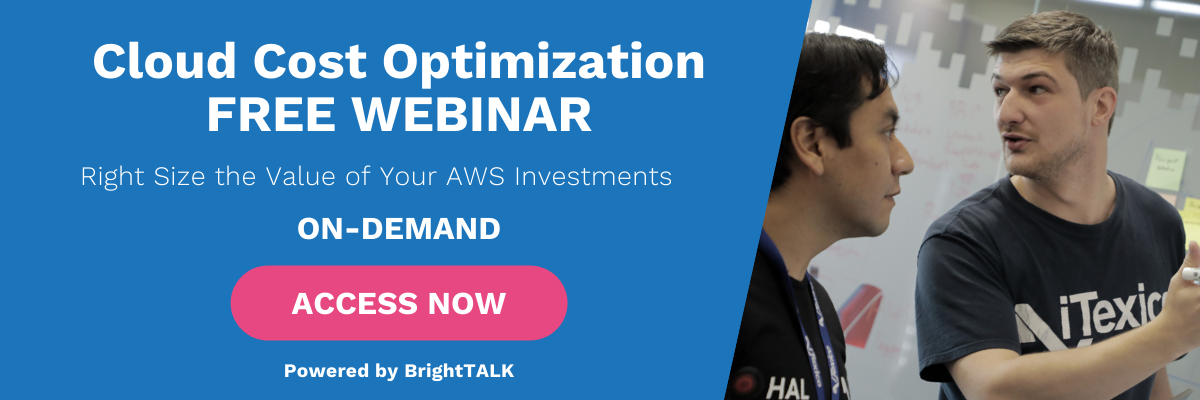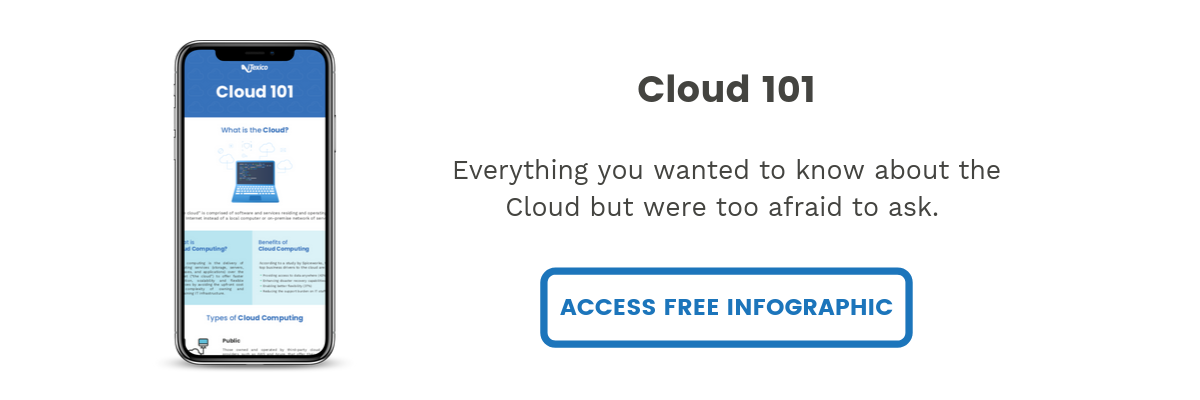Cloud Adoption Framework Stages and Perspectives for Your Business
Have you ever sought out to complete a project without making a plan for it in advance? Chances are most of us can remember an experience like that in any degree of the education system. Do you remember how that turned out? I don’t know about you, but frequently jumping into a project raw without a compass to guide me usually made the work twice as hard.
Anything worth doing well needs to be planned in advance, and that includes running your business. Utilizing frameworks as a means to an end is a mitigation strategy for virtually any large-scale undertaking you’re planning on. Much in the same way you’d make an outline for a research paper, generating a framework establishes an outlined strategy process while determining crucial roles and activities before implementation.
The better question, as I’m sure has already occurred to you, is how to ensure this framework will be properly constructed to deliver a structurally sound and effective strategy. While we aren’t claiming our strategy, what we’ll be talking about here will be relevant for every project you’ll be embarking on, we can say with confidence that it’ll be perfect for one category in particular: cloud adoption.
What Is Cloud Adoption?
The cloud adoption definition is the process by which organizations pick up and move shop from physical on-premise data centers to a digital cloud storage services platform. Everything you need to run your software development company, including every scrap of data stored in your hardware, is transferred to the internet where it’s stored in the aether of the cloud, accessible from anywhere with an internet connection.
There are any number of potential cloud service platforms that you can choose from to scoot your massive amounts of data into, but there are two top providers that are a head above the competition: Amazon and Google. Respectively, they provide AWS and Azure for their customers to host on, providing a venue for thousands of businesses, including many among the Fortune 500 companies.
Why Create an Action Plan for your Business?
Companies are like fingerprints - no two are exactly alike. The type of inevitable uniqueness that embodies the structure and culture of each business means that jumping between on-premise data centers to the cloud isn’t as easy as dragging a checklist off the internet and marking the boxes off. Success means you need to sweat a little blood to make sure everything is in its station.
A digital transformation journey towards the cloud is never the same for every company. Elaborating a bit, that means that the strategy for that migration should be tailor-made and designed based on the business’ current state, vision, goals, and capabilities. A cloud adoption framework is a tool to guide the organization before implementation: define where you are today and then map where you want to go.
Whether you call it a framework or an action plan, the point stands that blindly crawling in the dark is ineffective and opposing to your goals. Starting with a plan will inform you of every aspect of your organization that necessitates attention and proper care for when the time comes to migrate.
What Are Cloud Adoption Framework Stages & Perspectives?
An excellent cloud adoption strategy is dependent on designing a comprehensive framework with clearly defined steps, instructions, and intended goals. Doing so is best accomplished by splitting the process as a whole into a series of compartmentalized steps and areas of focus. These are the cloud adoption framework stages and the perspectives you’ll be organizing your cloud adoption into, each with five compartmental factors of their own.
The five main stages or steps you’ll need to establish are:
- Strategy
- Plan
- Architecture
- Implementation
- Improvement
The five core perspectives you’ll need to consider are:
- People
- Operations
- Finances
- Technology
- Security
Each of the five cloud adoption framework perspectives is intended to be used to address each of the steps, generating turnaround, effective communication, and holistic encompassment of everything you’ll need accomplished in advance of the final move to the cloud.
Strategy
People:
- You’ll start off by defining your current staff capability. Perform an analysis of skills, needs, and gaps to help you prioritize training, staffing and organizational changes. This will help you enumerate the new responsibilities that come with moving to the cloud, as well as identifying the organizational area that aligns with each responsibility. This is also the time to examine your current existing responsibility list and decide which ones should be retired.
Organization/Operations:
- You should take the opportunity here to assess the business’ cloud readiness. Do you feel that your existing structural organization is in a state where it will immediately function with minimal loss of productivity? Maybe, maybe not, but by determining the business drivers and developing your vision, goals, and priorities, you’ll ease the transformation into the new model.
Finances:
- Budgeting is a crucial part of cloud implementation. Cloud adoption isn’t a free service, after all. Make sure you understand the costs involved with moving your organization to the cloud. Cloud providers like AWS and Azure offer online calculators to estimate investments. Using these tools, you should establish risk tolerance and ROI.
Technology:
- Get a handle on your industry’s technology state. Once you’ve ascertained your position, the next step is to establish a baseline technical architecture for your company to move into.
Security:
- You want to be sure that your organization is going to be safe and secure while moving and once you’re in the cloud. Establish your company’s security tolerance and perform a migration risk analysis in anticipation of the migration.
Plan
People:
- You’ll want to have a good understanding of the people onboard the cloud teams, as well as the skills and capabilities that will move from a legacy or traditional model to a cloud model. In conjunction, determining the quality and scale of the training programs to upskill current technical teams provides your team members with invaluable cloud-based expertise. You’ll also need to determine the ability to augment the IT staff with an experienced outsourcing partner. Upskilling can even be approached through a best-effort basis, relying on free online educational resources. The new principles and best practices needed for cloud adoption can be studied in different ways to suit the team individual learning style. Remember that upskilling involves more than just technical knowledge. It’s about applying cloud-mindset on the daily job, and nurturing a culture of continuous learning.
Organization/Operations:
- It’s time that you built your business case. Take a look at the cause and benefits of migration to validate it as a useful activity. This will involve identifying the process, organization, and workforce that will be included. Who is engaged? What are their roles, responsibilities, and procedures? Establishing these answers is a necessity.
Finances:
- Like we said, cloud adoption isn’t cheap. Once you’ve moved, you want to recuperate your lost expenses. From here, start by building cost measures and develop a cost recovery strategy to cope with the move.
Technology:
- Now for your tech business case. Like with the organization perspective, validate the migration as a useful activity via its cause and benefits. From here, develop the to-be transition process itself, establish technical measures, and analyse IT risks. You can then draw from this information to develop a technical solution concept.
Security:
- This is where you’ll make your security business case. Ask yourself why the benefits of migration outweigh possible risks to validate it as a useful activity. Afterward, you’ll want to make sure you update your existing security policy while developing security and privacy measures.
Architecture
People:
- With all of the different outsourcing service providers available, if you haven’t already selected one then you might need a little guidance. Do so by applying selection criteria, like Gartner’s, to help inform you decision. From here, determine the preferred delivery and deployment method.
Organization/Operations:
- Things might get lost or jumbled around in the move. To help mitigate that possibility, design procedure patterns and establish operational measures to keep track of processes once migration is finalized. Doing so will help keep everything on track and where they’re supposed to be.
Finances:
- Taking the time to forecast and follow up on cost comparisons will aid in budgeting and selecting the right cloud service provider for your business.
Technology:
- The right migration service will have major impacts on your move. Determining which is the right one for your tech needs, the architecture, and cloud migration tool is the next step. You might have to protect valuable assets, so choose which business critical applications will be left in legacy systems if you decide that any need that treatment. It is suggested to start migrating simple, non-business critical applications to learn the ropes and develop the muscles in your cloud competencies. As the organization’s abilities to lead, scale, and secure cloud adoption progresses, you will feel more confident to tackle more critical applications. Establish technical measures as well.
Security:
- For your final selection, educate yourself in the different vendors’ security and privacy capabilities. In the meantime, ensure you’re keeping a security architecture and encryption in place.
Implementation & Adoption
People:
- It’s time you finally started actually working on the cloud! It was a big move, so you’ve got some work ahead of you to maintain company integrity and efficiency in maintaining workflow. To help with that, start by managing your contracts, reviewing your cloud partner’s statistics, and go the extra mile to maintain a tight relationship with them.
Organization/Operations:
- Once you’ve arrived on the cloud, you’ll have new resources to contribute to the improvement of your company. Auditing the process, performing operations, and collecting data are reliable methods for securing an improved working experience.
Finances:
- This part is simple, where you’ll be examining the billing process and managing costs and acquisition risk.
Technology:
- Conduct risk assessment and execute your migration plan. As this stage encompasses the majority of the move to the cloud, you’ll also begin operating in the cloud and maintaining the system there.
Security:
- As always, ensuring security is a priority, especially during the vulnerability present in cloud migration. Here you’ll be conducting a security assessment and managing the migration security risks.
Improvement and Innovation
People:
- Now that you’ve actually completed the move to the cloud, improving every aspect of your work comes next. Improving cloud adoption through all features is an iterative process. Retrospectively look at lessons learned from cloud adoption, and use those experiences to implement skill updates to staff and keep sure they are aware of what’s happening. With everything settling, you can take the opportunity to fix anything that went wrong in the first round. It’s all about continuous improvement and development of your staff’s capabilities.
Organization/Operations:
- Using data obtained in the implementation process, set out to continuously improve the organization through newfound skills and information.
Finances:
- As with every other aspect of the improvement portion of the cloud adoption process, you should be seeking to continuously improve the investment to optimize the value of cloud services.
Technology:
- For technology, you should focus on your areas of improvement toward maximizing your overall capability using cloud services.
Security:
- As always, you should keep a keen mind on improving security and privacy practices through continuous monitoring.
Conclusion
Building an effective cloud computing adoption framework is a straightforward yet tricky undertaking. While we can provide you with the structured steps and tips needed to commence with the migration, completing everything necessary will require some effort on your end of things. As we said, every company is unique, and measuring and determining the important aspects of your company’s value and capability can end up being a sizable platter of work.
The number one scrap of information you should be taking away from this article are the five stages and the five perspectives involved in securing a successful cloud migration. Adhering to these steps supplies with you all the means you’ll need to establish an effective means of information gathering and capability measurement. It’s all a part of an overall process designed to ensure your cloud migration experience proceeds as smoothly as possible.
While cloud adoption can be confusing to deal with, we here at iTexico can help smooth out the process through Nearshore Outsourcing. Learn more about how outsourcing cloud adoption can facilitate the process and contact us here to see how we can make
cloud adoption as blissful as cloud 9!
Hand-Picked Related Reads For You

Cloud Migration Strategy & Best Practices
READ MORE

The Benefits of Leveraging Cloud Migration Services
READ MORE

What is Cloud Adoption?
READ MORE





Post Your Comment Here